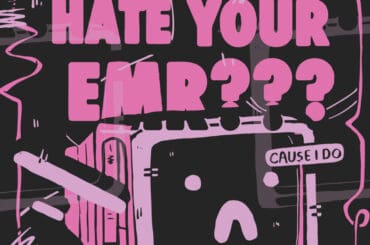Does Your Medical Practice Model Drive Hiring More Money Makers or Money Takers?
Money Traps of Practicing Medicine Traditionally
Providers are fatigued and feeling trapped in a broken healthcare system and a cycle of hiring more staff just to keep up with administrative tasks. In today’s fast-paced healthcare landscape, traditional practice models can inadvertently lead to hiring more “money takers” than “money makers.” Without the right tools in place, your practice may find itself drowning in paperwork, drowning in expenses, and struggling to keep up with patient demand.
Practicing medicine with the inefficiency of manual charting and documentation is a HUGE money trap for practices today, that concurrently kills scalability. Each minute spent on tedious administrative tasks is a minute taken away from patient care and revenue-generating activities. Without real-time data insights and streamlined workflows, your practice may be losing valuable time and resources.
As patient volumes increase and regulatory requirements become more complex, practices often find themselves overwhelmed and unable to meet demand. As more practices are implementing smarter resources that cost a fraction of a salary, patients experience the contrast in care. Patients are firing providers where they experience “care” short-sided with generic forms, repeated questions, and confusing billing. Patients are learning there is a better way that shows respect for their time and prioritizes their health (versus just their wallet).
Freeing Your Practice to Hire More Providers and See Exponentially More Patients

Enter the Interpretive Health Record (IHR) – a game-changer for modern medical practices. Unlike traditional EHR systems that simply store patient data, the IHR will analyze and interpret that data, providing actionable insights to improve clinical decision-making and streamline workflows.
By harnessing the power of IHRs, practices can free themselves from the shackles of manual documentation and administrative burdens. With automated charting, real-time data updates, and customizable templates, providers can invest more time in impactful patient care. There becomes value in every patient appointment – focused on collaborative health goals without a moment of wasted administrative annoyances.
The benefits don’t stop there. IHRs also enable practices to scale efficiently and see exponentially more patients without sacrificing quality of care. By automating repetitive tasks and optimizing practice workflows, practices can increase patient throughput, improve patient satisfaction, and drive revenue growth.
The Overall Profit Impact
Worth mentioning, the IHR opens up a world of exciting possibilities for passive income generation. By leveraging built-in store platforms and e-commerce capabilities, practices can monetize their data and expertise in new and innovative ways. Imagine offering personalized health and wellness products to your patients directly through your practice’s website. Or easily expand reach with less overhead by providing virtual consultations and telemedicine services to patients.
In conclusion, take the time to do the math. Even if investing in an IHR costs a little more than your current EMR/EHR (which it often doesn’t!), adopting the technology makes sense when it drives exponentially larger profits, simultaneously lightening the load for everyone: providers, the front desk, nurses, and even patients.
Don’t let outdated practices keep your practice from surviving – invest in the future of medicine with Eva.


